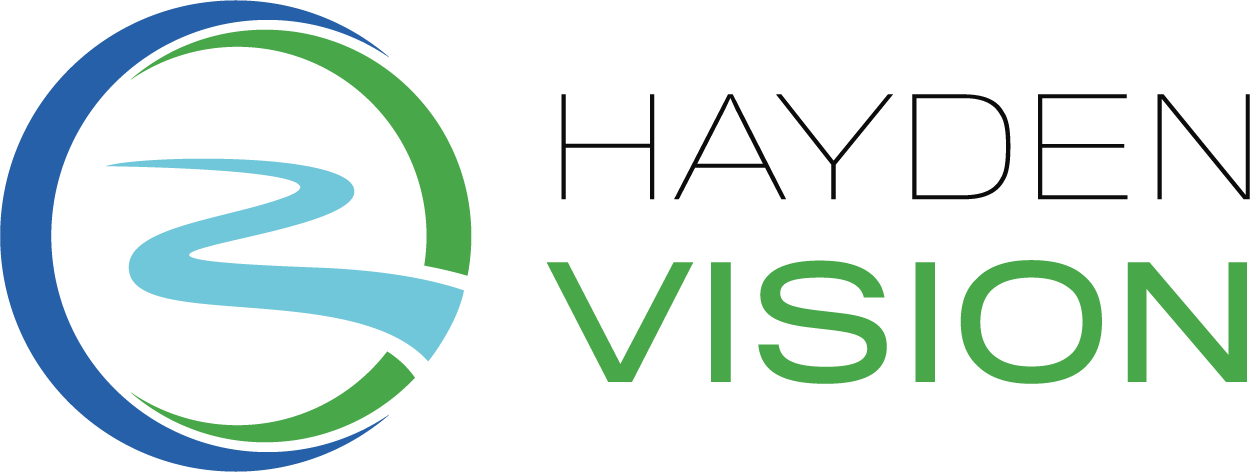Routine and regular eye exams are critical in determining if you need correction to see well, and to monitor and maintain your eye health.
While some eye diseases have obvious symptoms such as red eyes, light sensitivity, or flashing lights, many serious, vision-threatening problems have no warning signs. Glaucoma will present no symptoms until actual vision loss occurs. Comprehensive eye exams also detect diabetes, hypertension, retinal holes or tears, and other threatening, but treatable, medical conditions.
Our Hayden Vision comprehensive eye exam involves a series of tests designed to evaluate your vision and check for eye diseases. Each test is necessary and allows us to evaluate a different aspect of your vision. Tests include:
- External eye exam: We will check your eyes using a specialized examination light to ensure the exterior parts of your eyes are functioning correctly. We check:
- Your pupils to see if they respond normally
- Position and movement of your eyes, eyelids and lashes
- Your cornea and iris for clarity
- Eye Muscle Test: We examine your eye muscles to ensure they’re functioning properly. We look at movement in six specific directions. The eye muscle test is designed to detect any weaknesses or uncontrolled movements in the muscles that move your eyes up and down and side to side.
- Visual Acuity Test: This test measures how sharply or clearly you can see something at a distance. We will ask you to identify different letters of the alphabet on a chart positioned usually 20 feet away. The lines of type get smaller as you move down the chart. You cover one eye and read aloud, then cover the other eye and read aloud. Your visual acuity is expressed in a fraction – such as 20/20 vision. The top number refers to your distance from the eye chart, usually 20 feet. The bottom number indicates the distance at which a person with normal eyesight could correctly read the line you read. For example, 20/20 vision means that you can see objects clearly from 20 feet away that a person with normal vision could see clearly from 20 feet away. However, if your visual acuity is 20/50, the line you read correctly at 20 feet could be read by a person with normal vision at 50 feet.
- Refraction Assessment: Refraction refers to how light waves are bent as they pass through your cornea and lens. A refraction assessment helps us determine a corrective lens prescription that will give you the sharpest vision. Your doctor will have your look through a phoropter, a device that holds many lenses, and determine which combination of lenses gives you the sharpest vision. This is the, “Which is better – 1 or 2?” test.
- Visual field test: We may perform a visual field test based on information gained in your comprehensive exam. This test is used to determine whether you have difficulty seeing in any areas of your peripheral vision – the areas on the side of your visual field.
- Slit-lamp Examination: A slit lamp allows your doctor to see the structures at the front of your eye using a microscope with an intense line of light to illuminate your eye. The slit lamp allows us to examine the cornea, iris, lens and anterior chamber of your eye.
- Retinal Examination: A retinal examination assesses the back of your eye, including your retina, optic disc, choroid and blood vessels. We may use special eye drops to dilate your pupils, opening them wider so we can see the back of your eye. The effects of these drops will not wear off for several hours. Your vision will be blurry, and you’ll have trouble focusing your eyes. You might not be able to return to work immediately after your exam. Your eyes will also be very sensitive to light so we recommend using sunglasses. It may not be safe to drive yourself after having your eyes dilated if your vision is too blurry or too sensitive to light, so you should make arrangements to have someone drive you after your appointment if needed.
- Tonometry: Tonometry measures the intraocular pressure inside your eyes. This test, in conjunction with more specific tests such as an OCT, a visual field and a detailed retinal exam, will help us assess your risk for the development or, or progression of, glaucoma.
